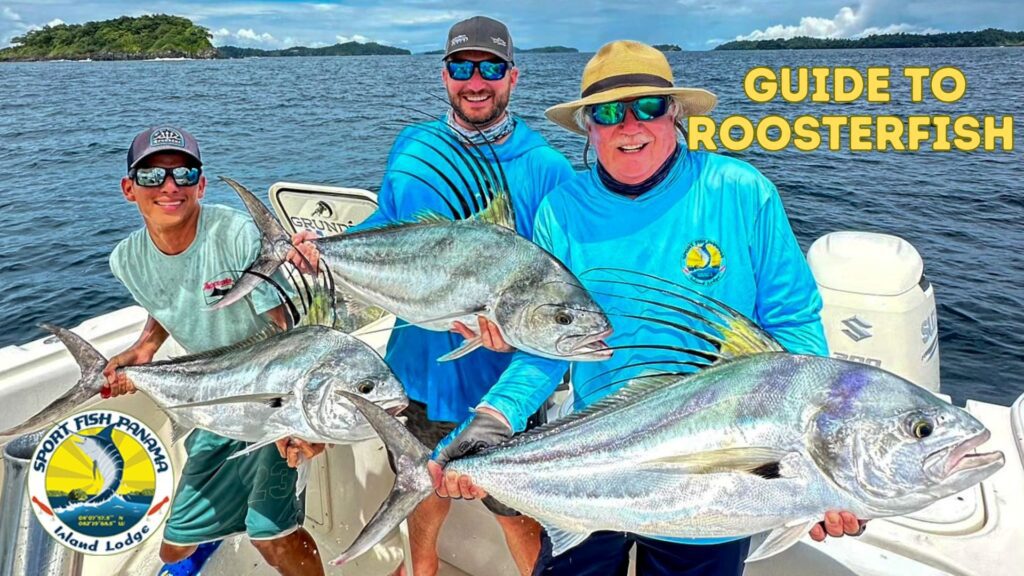The roosterfish is an enigmatic creature. Its regal crest—an appendage that sometimes knifes through the surface when the roosterfish attacks a popper—is equal parts dorsal and crown.
The king of the inshore, the Gulf of Chiriqui is among the best places in the world to target roosterfish. The species is only found in the eastern tropical Pacific Ocean, hugging the coastlines of Central and northern South America. Relatively little is known about the roosterfish.
At the Sport Fish Panama Island Lodge we are incredibly fortunate. Our island lodge is literally surrounded by roosterfish. They haunt pinnacles and high spots, patrol the wash around islands and rocky shorelines. We even sometimes catch them where we moor our fleet.
What follows is the Sport Fish Panama Island Lodge guide to catching roosterfish. We ought to know—we catch a lot of them, and big ones, too.
How We Catch Roosterfish
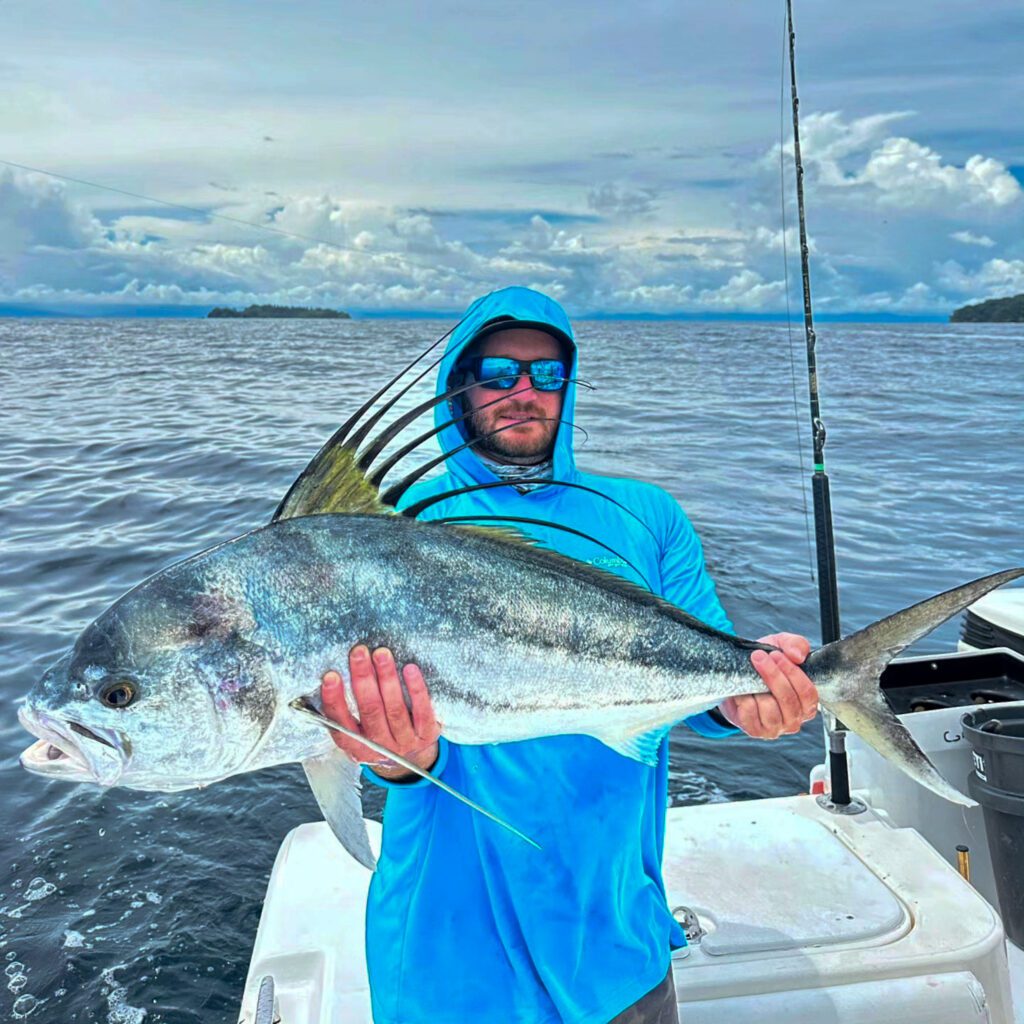
When we target roosterfish, we most often do so around islands or fishing over pinnacles in open water. The setup of our boats makes fishing around the islands very fun.
We usually bump troll two live blue runners off the stern. Our guests then stand on the bow and throw poppers or stickbaits as close to the shore as they can get them.
This really exciting fishing. Anytime you catch a big fish on a topwater, it’s exciting. Catching roosterfish this way can be that much more exciting. Not only do they blow up on poppers, but sometimes while chasing it they crest their fins out of the water. Experiencing this type of action— all set to a beautiful, tropical landscape, will keep you coming back for more.
A Bridle-Rigged Blue Runner
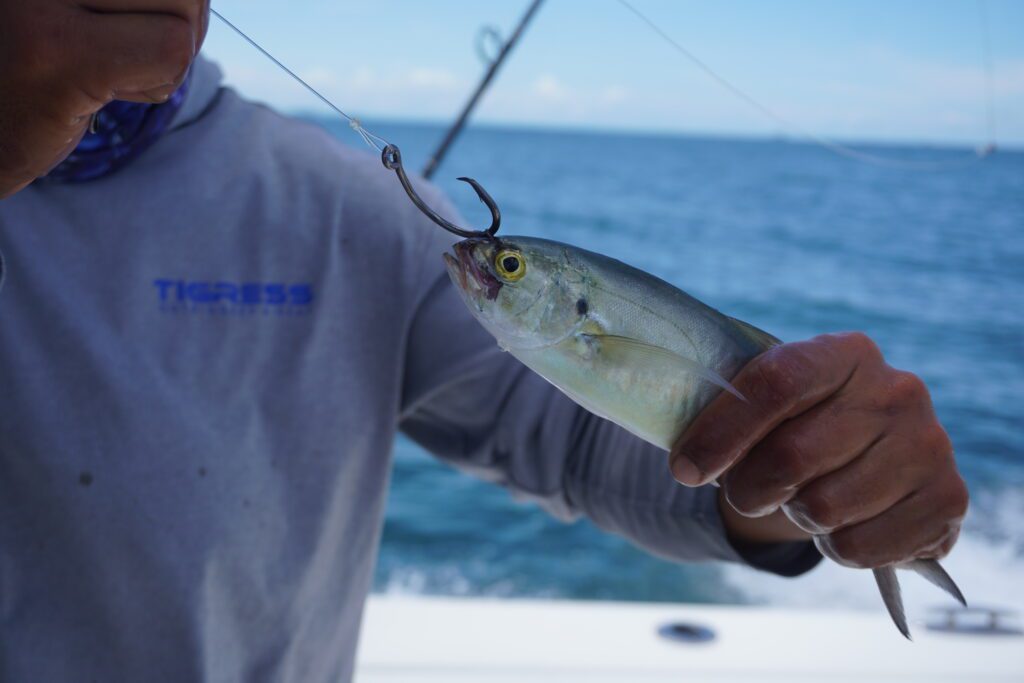
We bump troll the blue runners behind the boat. These baits are bridle-rigged onto a circle hook.
We tie a loop of wax floss onto the shaft of a circle hook. Our crew then uses an open-eyed bait needle to thread the loop over the top of the bait’s eyes. We then run the point of the hook through the loop, twist it a few times and effectively tie the runner to the hook.
We toll these baits 40 or 50 yards behind the boat. Our crews use conventional setups—Accurate reels on Blackfin rods. We run the lines through the outriggers, with the reels near freespool. The first indication of a roosterfish bite might be the clicker squealing, it might be the bait thumping in a frenzy.
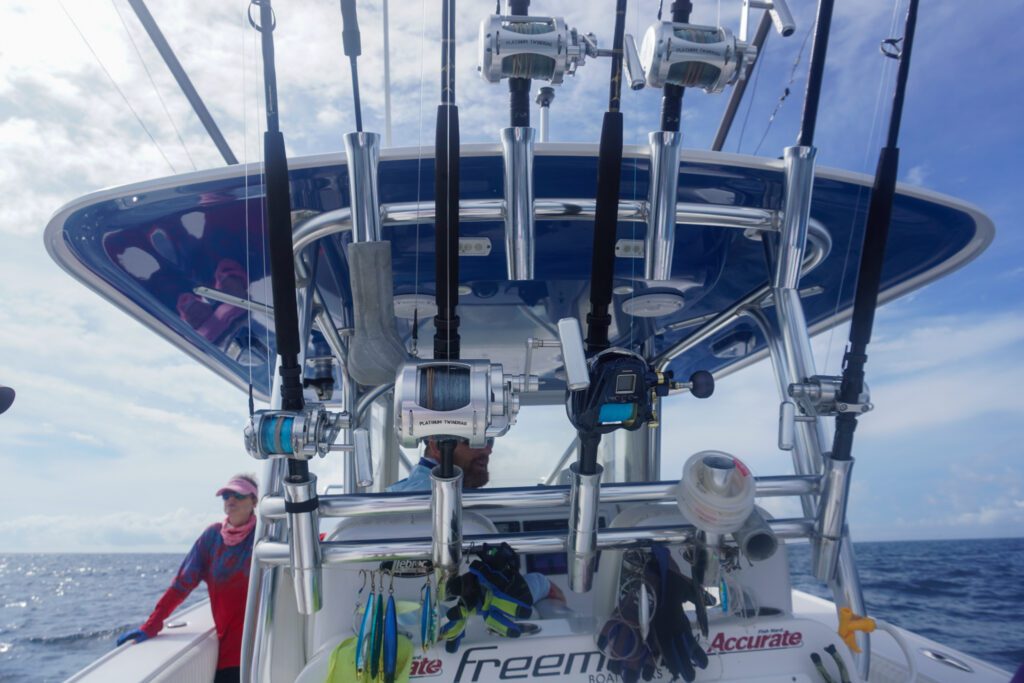
When this happens, our crew or the angler, will grab the rod and put the reel completely into freespool. We’ll give the fish a few seconds to consume the bait, before engaging the drag and reeling.
This process engages the circle hook in the corner of the roosterfish’s mouth. We release all of these wonderful fish and circle hooks are a great way to release them in good health.
BIG Roosterfish on Big Baits
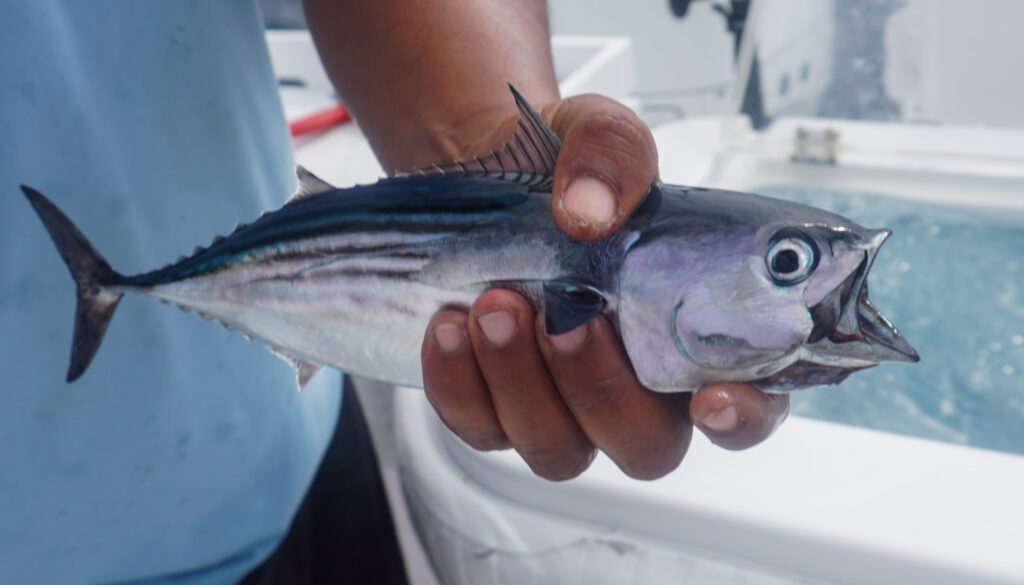
Targeting big roosterfish on pinnacles often involves trolling live bonito. The thought of an inshore fish consuming a little tuna might sound a bit strange. It’s the size of the roosterfish that we catch that makes it possible.
In some places, like around Isla Montuosa, we can actually catch roosterfish on the same setups that we catch black marlin and big yellowfin. Panama is a terrible place to be a bonito. The shoreline where we catch roosterfish is only about a half mile from some incredible marlin fishing bottom. This is one of the great charms of fishing in our part of the world.
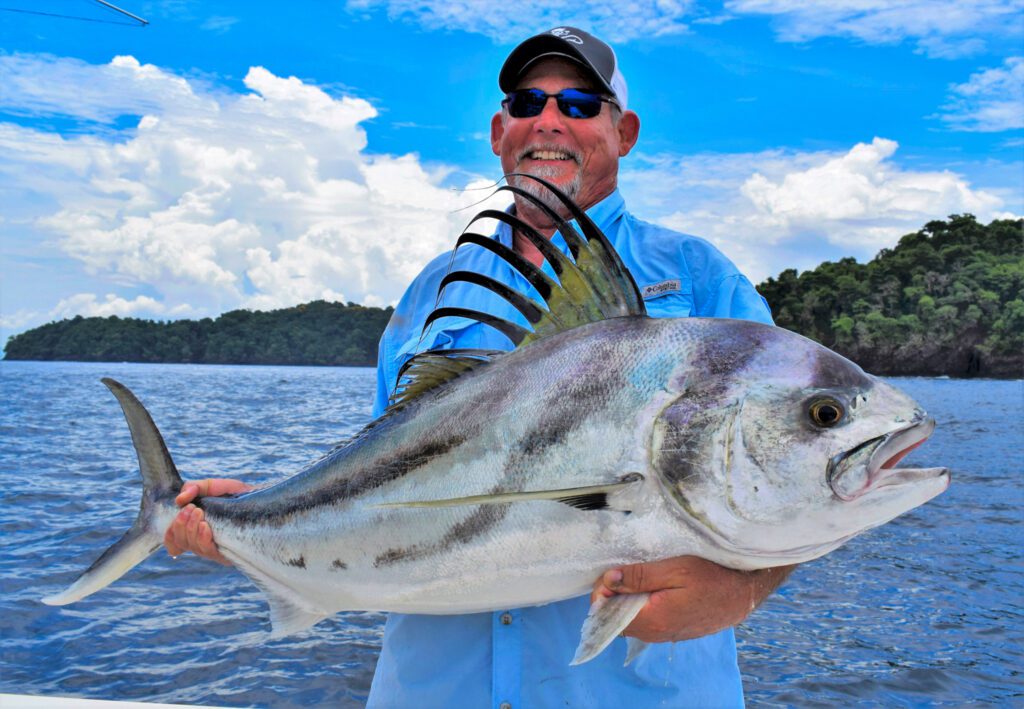
The set up for these baits is similar to that of the bridle-rigged blue runners. We use conventional tackle, but we’ll deploy these baits on 30s or 50s. These reels have line capacity and enough backbone to stop a big roosterfish or put the brakes on a big snapper, if a cubera takes the bait.
Upon strike, you’ll give the fish a drop back. It will eat the bait, you’ll hook it up and the battle is on. If you hook a roosterfish on a bait that 12 inches long you can imagine that it’s likely a fully grown one. This is super exciting stuff—and the type of thing that doesn’t happen in many other places in the world.
Timing
Roosterfish, like cubera snapper, are here year-round. The best time to catch them coincides with the peak of black marlin season from November and into March.
Because we have such steady and consistent roosterfish fishing, our guests can coordinate trips to their exact specifications. You can come down during the peak of roosterfish season.
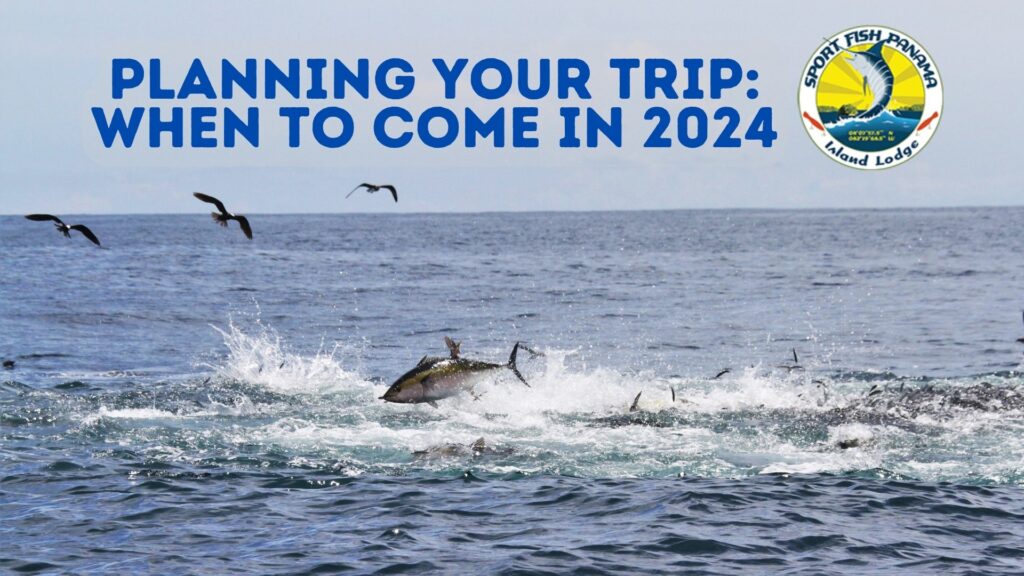
You can also schedule your trip to coincide with other opportunities. May and June are great months for tuna frenzies. The yellowfin fishing can be incredible—lots of fish and giants. We catch roosterfish those months as well.
November and December
November and December are great all-around months here. The marlin fishing is really good. There are tuna. The inshore bit is consistent and you can put up big numbers of big fish.
A good roosterfish in this part of the world runs in the range of 50-60 pounds. We catch plenty of fish that are this size, and some that are quite a bit bigger.
No matter when you visit, we can chase some roosterfish. We can also likely find some tuna. There could be black marlin around, maybe some blues. We might catch some wahoo and dorado. We can likely put you on a big cubera snapper too.
And because our part of the world includes an incredible diversity of inshore and offshore habitat (that exists in such close proximity to each other), we can put together a trip that covers all of the bases. And no matter what you wind up catching or when you plan to come, you can count on our top-shelf experience.

Great food, all your beer and booze included. Waterfront guest rooms and the ability to partake in perhaps the best fishing trip of your life all while enjoying Panama’s only private island fishing lodge. This is fishing in style and we’d love to show you what it’s all about.
 (866) 245-1492
(866) 245-1492 

